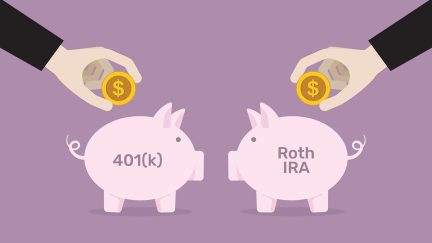For more stories like this, sign up for the PLANADVISERdash daily newsletter.
IRS Reveals 2023 Contribution Caps for 401(k) and IRAs
The contribution limit changes reflect cost of living changes from this year.

Today the IRS announced the new limits on annual IRA and qualified retirement plan contributions for 2023.
The annual contribution limit for workers who participate in 401(k), 403(b) and most 457 plans, as well as the federal government’s Thrift Savings Plan will be increased to $22,500 from $20,500. The annual IRA contribution will increase to $6,500 from $6,000.
Catch-up contributions for those 50 years and older will increase to $7,500 for 401(k)s, 403(b)s, most 457 plans and the federal government’s Thrift Savings Plan, adding up to allowing for an annual total contribution of $30,000.
The $1,000 catch-up contribution for IRAs remains unchanged, allowing those age 50 years and older to contribute up to $7,500 annually.
The tax phase-out range for single people went up to a range of $138,000 to $153,000 from $129,000 to $144,000; and for married couples it will increase in 2023 to a range of $218,000 to $228,000 from $204,000 to $214,000.
The limitation regarding SIMPLE retirement accounts will increase from $$14,000 to $15,500. Effective January 1, the limitation on the annual benefit under a defined benefit plan under Section 415(b)(1)(A) of the Internal Revenue Code (IRC) will increase from $245,000 to $265,000. For a participant who separated from service before January 1, the participant’s limitation under a DB plan under Section 415(b)(1)(B) is computed by multiplying the participant’s compensation limitation, as adjusted through 2022, by 1.0833.
The limitation for defined contribution (DC) plans under Section 415(c)(1)(A) has been increased for 2023 from $61,000 to $66,000.
The limitation used in the definition of “highly compensated employee” under Section 414(q)(1)(B) will increase from $135,000 to $150,000. More details are available in Notice 2022-55.
You Might Also Like:

The 2026 ‘Employer’s Guide to Fringe Benefits’ Is Now Available

IRS Issues Covered Compensation Tables for 2026 Plan Year

Recordkeepers Prepare for 2026’s ‘Roth-Only’ Catch-Up
« Financial Advisers Increasingly Turn to Alternative Investments Amid Stock and Bond Declines